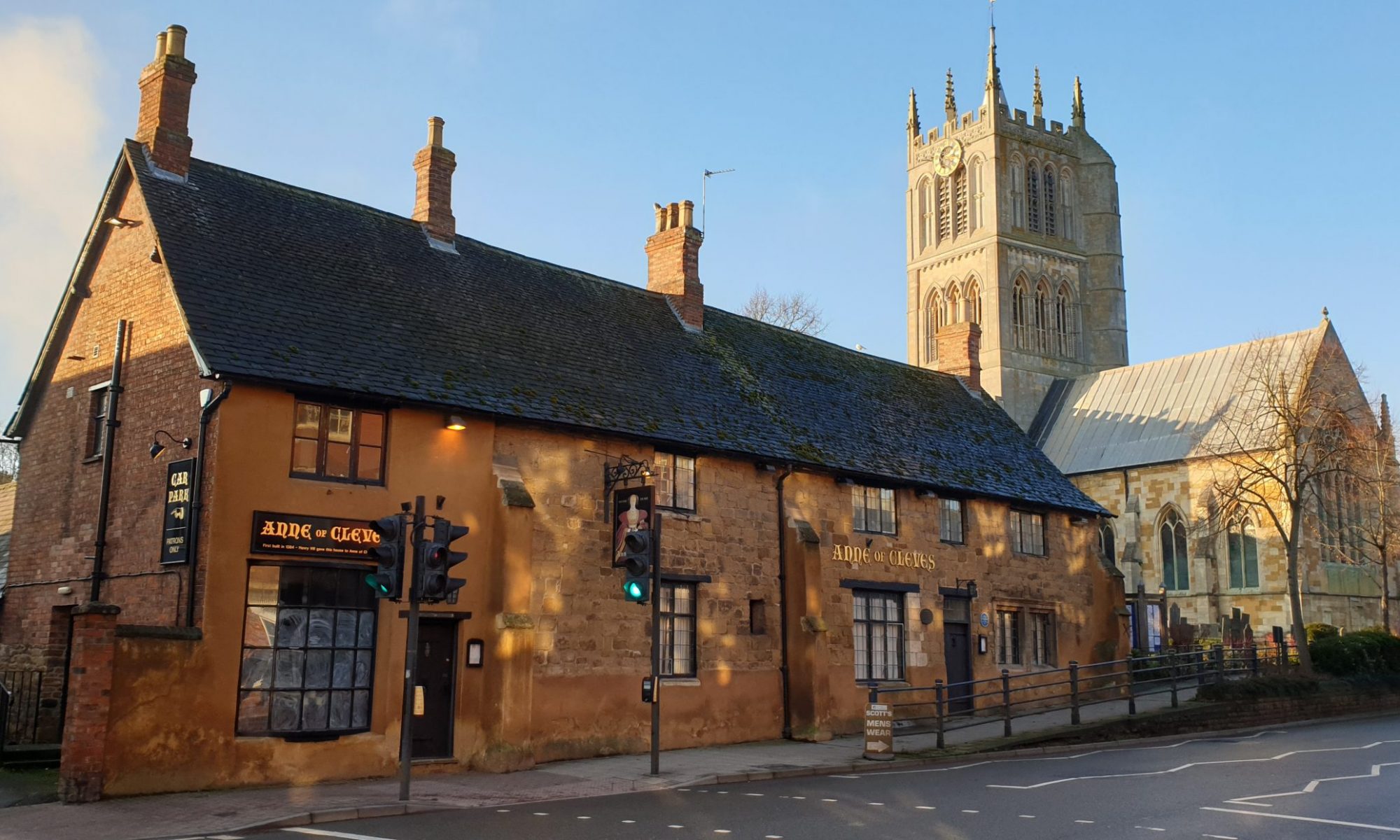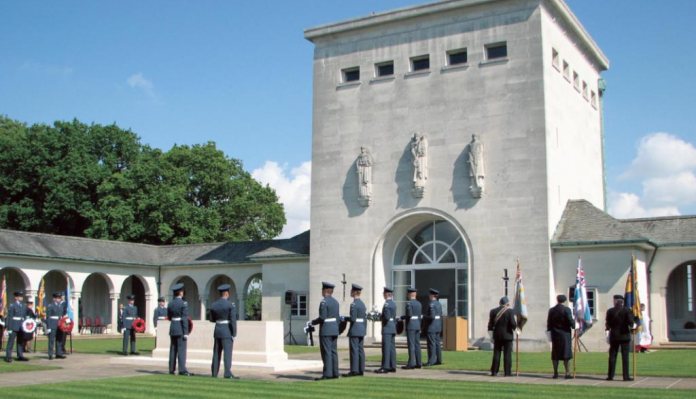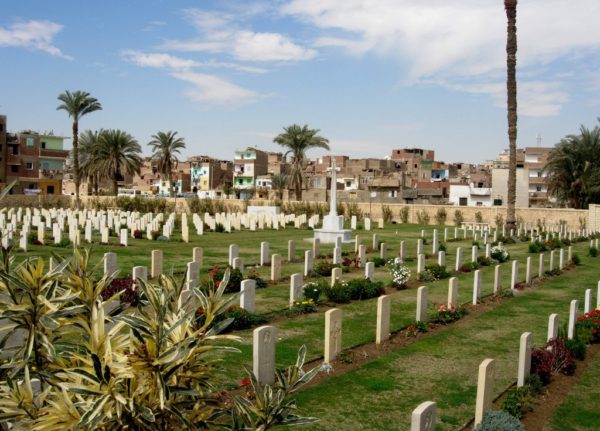William Ernest Plumb was born 20th March 1899 in Oakham and his parents were Alfred and Harriet. At the time of the 1901 census, William, his elder brother Cecil and their parents were living at No 6 Roseberry Avenue Melton Mowbray.
He was baptised on 25th December 1904 at Thorpe Arnold Church. By the time of the 1911 census, the family had grown in size. William was now aged 12, his elder brother Cecil was a plumbers apprentice and they, along with their 2 younger siblings, John (4) and Edith (1) were now living at 11 Stafford Avenue Melton Mowbray with Alfred and Harriet.
After leaving school, William became a joiner (Carpenter Apprentice) working for Mr. Waite. Shortly after his sixteenth birthday, William enlisted in the Army on the 17th April 1915, being appointed as a bugler with the Royal Army Medical Corps.
On the 22nd February 1918, he transferred to the Royal Flying Corps with the rank of Air Mechanic 2nd Class and was promoted again to Air Mechanic 3rd Class on the formation of the Royal Air Force on the 1st April with the merge of the Royal Flying Corps and Royal Naval Air Service.
According to the RAF Nominal Roll, Williams service number was 145257 and his trade on joining the RAF was Rigger (Aero.) and he was earninmg 2s 0d per day.
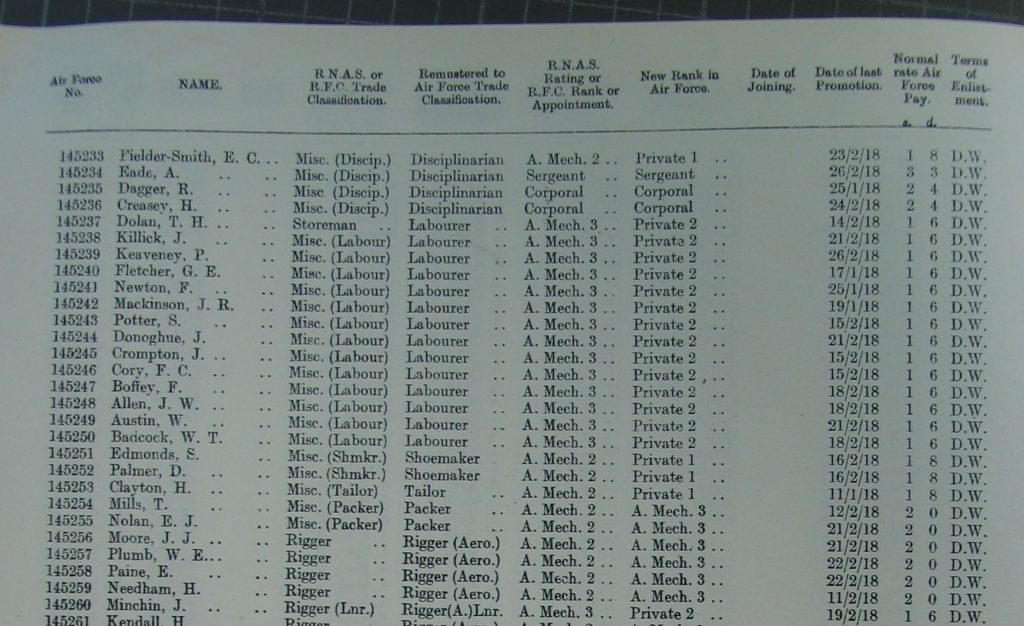
On the 4th May 1918, he was assigned to No 8 Training Depot Station at Netheravon, where he stayed until 31st May when he was re-assigned to No 207 Squadron.
As part of the formation of the Royal Air Force on 1 April 1918, No. 7 Squadron, Royal Naval Air Service became No 207 Squadron Royal Air Force.
To ‘celebrate’ this occasion, on the last night of March 1918 preparations were put in hand for a raid in the early hours of 1 April against Bruges Docks and Thourout railway junction, involving four Handley Pages from 207 Squadron, (HPs 1459, 3128, 3119 and 1462), and five from 214 Squadron. The raids were carried out between 0330 and 0430 hrs and a total of seven tons of bombs were dropped.
It was the last raid to be flown by 207 Squadron for the moment because on 22 April the unit was withdrawn first to Cappelle and then to Netheravon, England, later moving to Andover on 13 May, in order to re-equip with new Handley Page 0/400s and to train replacement air and ground crews.
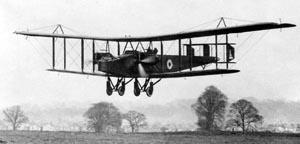
At the time, it was the largest aircraft that had been built in the UK and one of the largest in the world. It was built in two major versions, the Handley Page O/100 (H.P.11) and Handley Page O/400 (H.P.12). The O/400s could carry a new 1,650 lb. (750 kg) bomb which was aimed with the Drift Sight Mk1A bombsight. In service, they were deployed in force, with up to 40 aircraft participating in a raid.
Following re-equipping, the Sqn commanded by Maj G L Thomson DSC, returned to France, arriving at Ligescourt, from where it recommenced operations under the control of the 54th Wing, IX Brigade RAF.
Following the Armistice on the 11th November, the Squadron moved forward to Carmin aerodrome near Lille on the 1st December 1918, and then to Merheim, Cologne, on the 1st January 1919 where it was placed at the disposal of the Army’s 2nd Brigade for duty with the Army of Occupation.
Shortly after his arrival in Germany, William contracted bronchial pneumonia and died on 20th January 1919 at the age of 19. He is buried in the Cologne Southern Cemetery in grave I.C.3.
His death was announced in The Melton Times on the 14th February 1919 and in the Weekly Casualty List (dated 20th Feb 1919) issued by the War Office & Air Ministry.

William is commemorated by name on the World War 1 Memorial inside St Mary’s Church.

In addition to the memorial at St Mary’s Church, he is also commemorated on the towns main war memorial at Egerton Lodge memorial Gardens plus on a 3rd memorial at St Mary the Virgin Church Thorpe Arnold.
